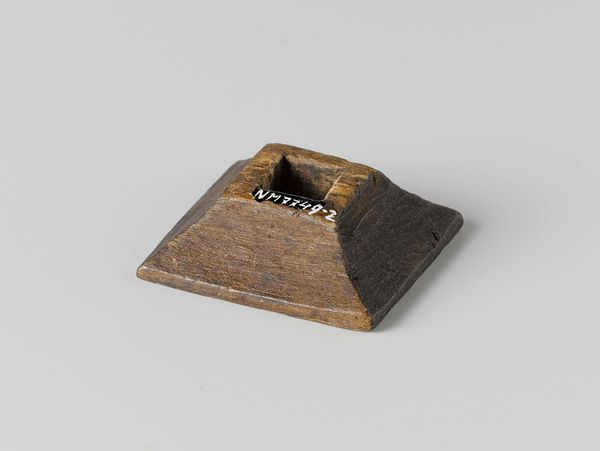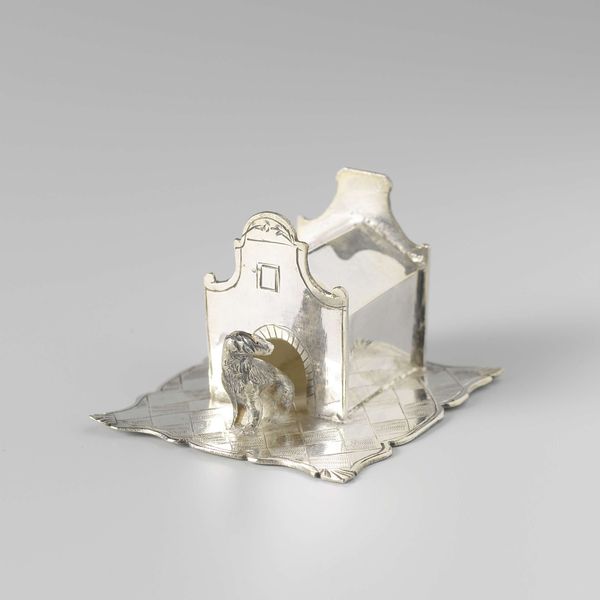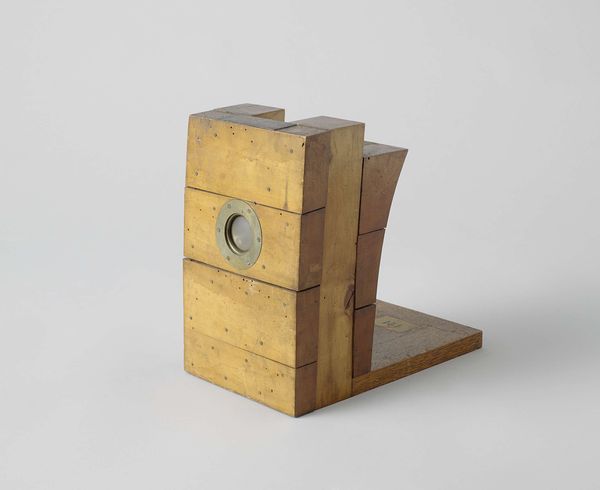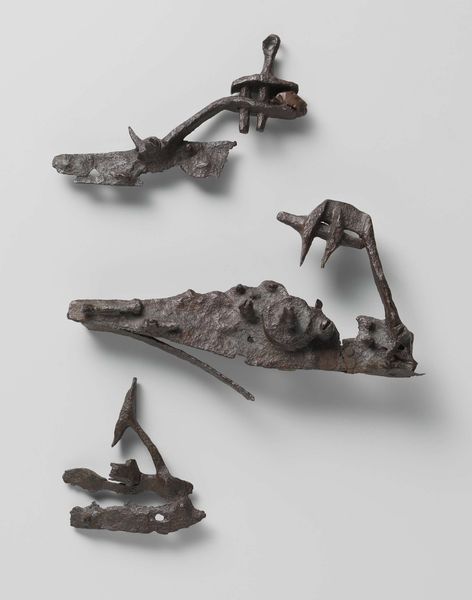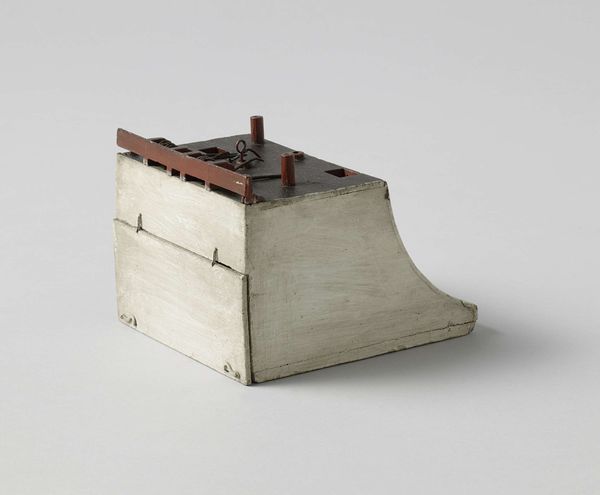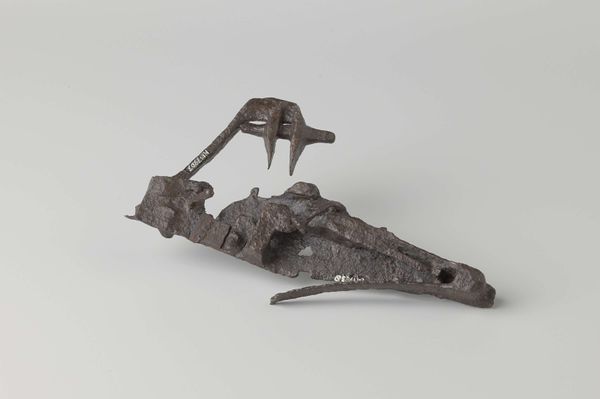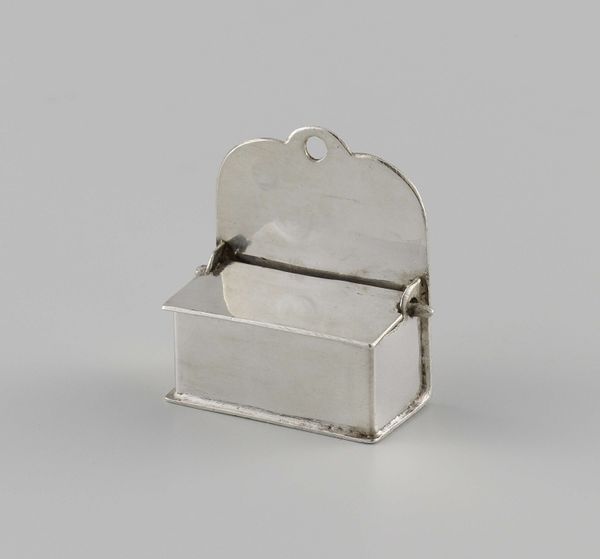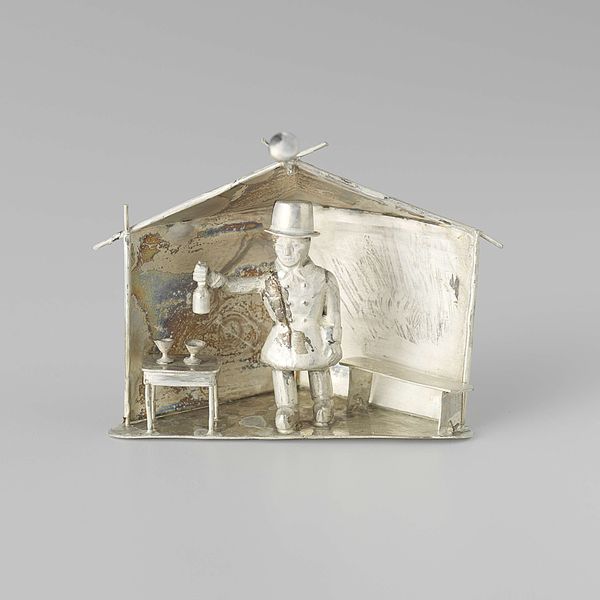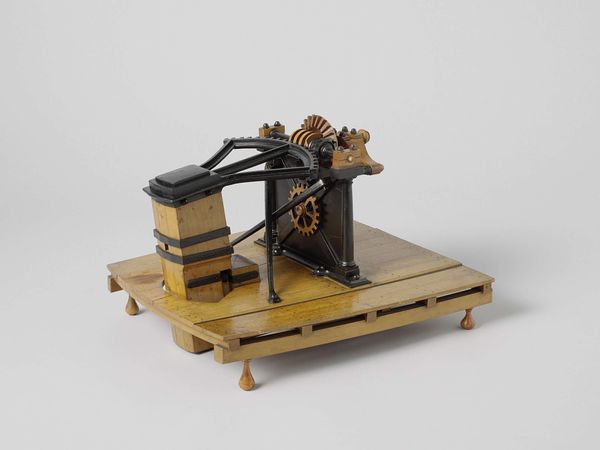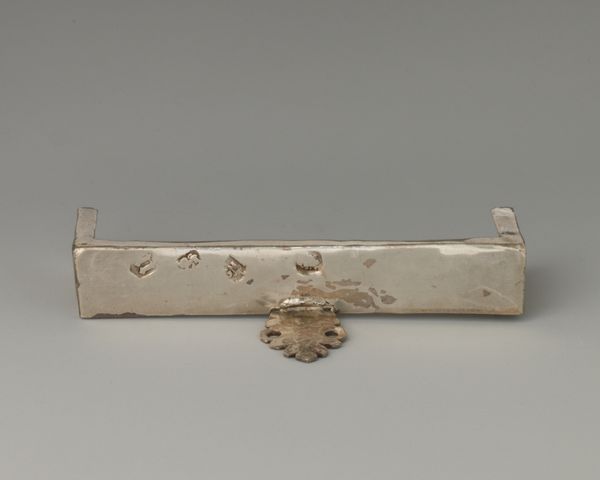
metal, sculpture
#
animal
#
metal
#
sculpture
#
decorative-art
#
miniature
Dimensions: height 3.4 cm, width 2.2 cm, length 7.4 cm, weight 25.50 gr
Copyright: Rijks Museum: Open Domain
Curator: Before us is “Hondenhok,” a metal sculpture crafted by W. Freen between 1856 and 1858. What are your first thoughts? Editor: Immediately, the stark simplicity grabs me. The diminutive scale emphasizes the metal's reflective properties, yet its age imparts a softened, almost worn texture. It projects a quiet domesticity, shadowed with confinement. Curator: The linear precision juxtaposed with the roughly worked form creates a rather curious dialectic. Tell me more about that idea of confinement. Editor: Look at the miniature scale and rigid forms. The choice of metal—cold, unyielding—speaks volumes about constraints, both physical and emotional. How does its metallic construction inform its reading in a formal sense? Curator: Precisely. The metal work’s linearity offers a fascinating geometric framework that underlies its representational purpose. Consider how the artist's labor becomes so visibly connected with notions of functionality. Editor: Right, seeing how metal is coerced to emulate the warmth of domestic life. This is functional, but also incredibly illustrative. Do you think this complicates the art object as such? Curator: Not at all. Such utilitarian design elevates the functional, turning it into something more than its primary use. Its presence as a piece meant for show rather than a practical function, its materiality highlights the artistic choice, which enhances the formal elements. Editor: This certainly forces us to consider the choices behind this miniature construction, and perhaps, to connect that artistic intent to broader conversations around social status. Fascinating how such a small work provokes so much. Curator: Indeed. Reflecting on this, I see the inherent visual power that transcends the object itself—an idea distilled into form and texture. Editor: Absolutely. And I’m left pondering what sort of daily labor went into bringing this vision to light and under what societal constraints the original craftsperson may have worked. A truly interesting juxtaposition of form and circumstance.
Comments
No comments
Be the first to comment and join the conversation on the ultimate creative platform.
